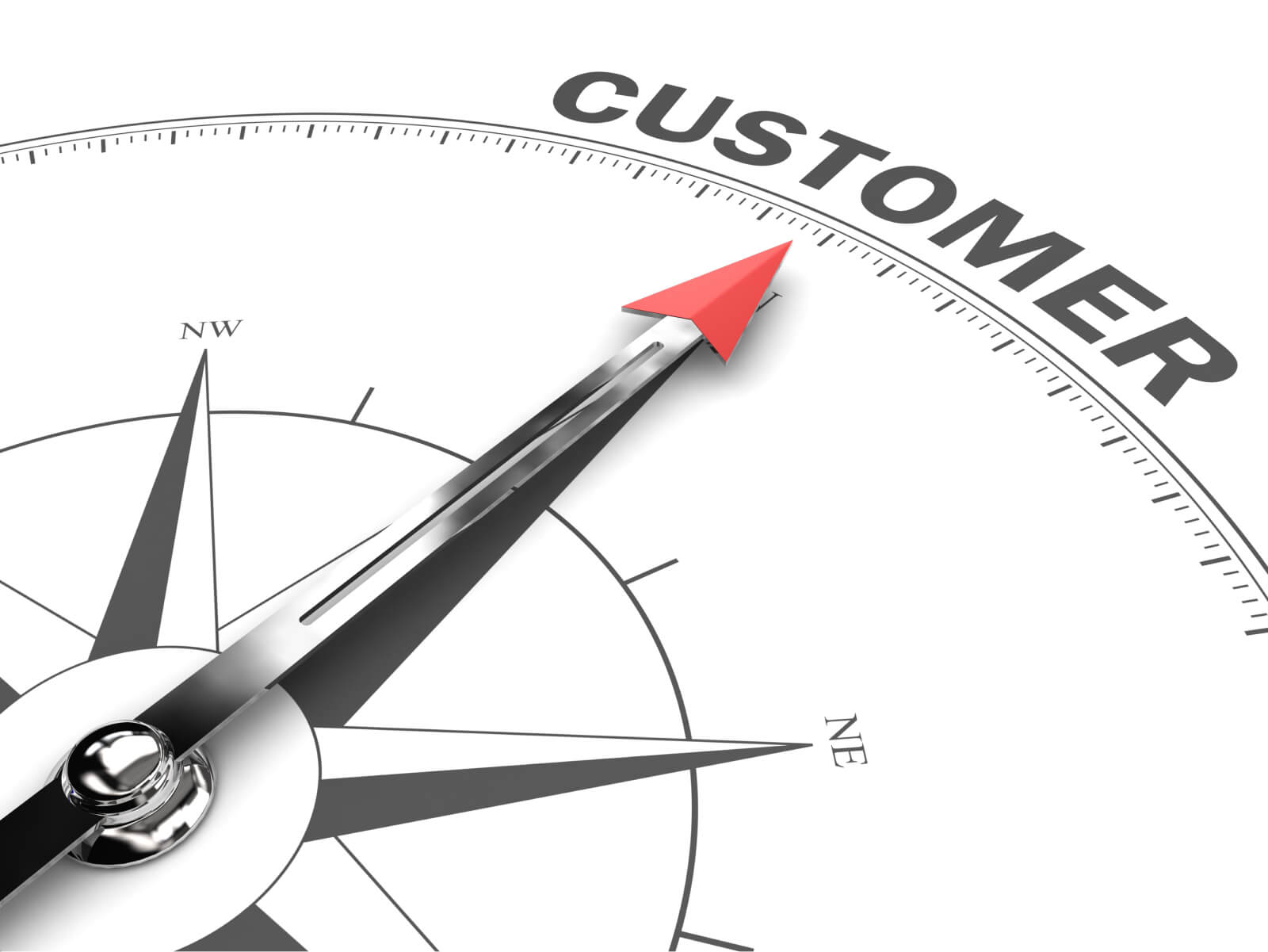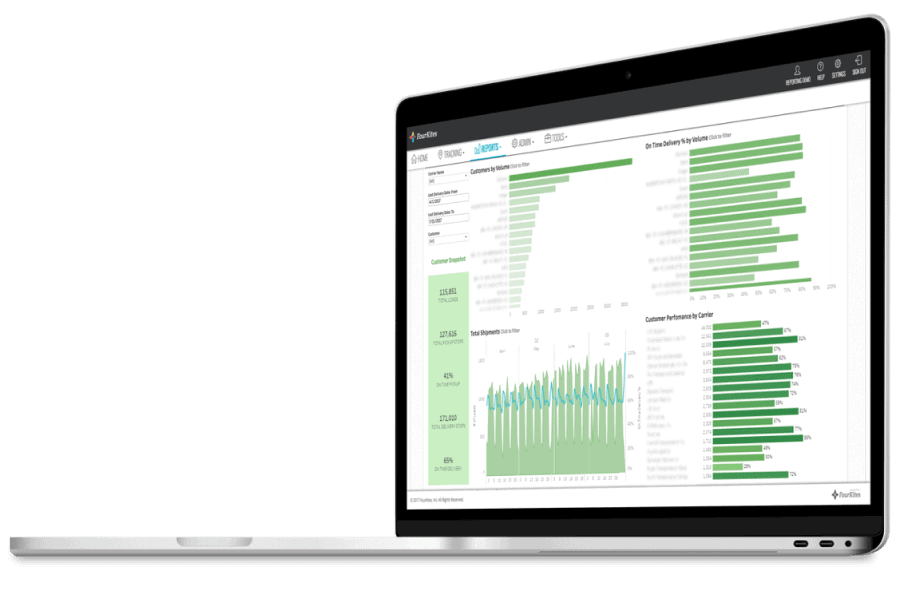
Having a customer-focused supply chain essentially means meeting the customer on their terms, rather than making them settle for yours. It’s about promoting transparency and sharing information with your customers proactively, without making them dial into your helpdesk or support team.
For example, many of our customers use tools like FourKites Notification Rules, encrypted links and watcher settings to simultaneously alert key stakeholders both within their organization and their customer base when critical events occur in the lifetime of a load in transit. In doing so, they can pull back the curtain on the shipments that matter most to their customers and end-users, without compromising the security or efficiency of their own organizations.
A customer-driven strategy for any business means moving away from treating your product as the guiding light for your business decisions, and instead focusing on the people who use that product. It’s a contrast to the product-driven strategy that many companies adopt by default, and comes with several unique advantages that can help you stand out despite changing market pressures and rising customer expectations.
But it doesn’t stop there. Building a customer-focused supply chain also means providing insights to your customers and working collaboratively to improve not just your own operation, but the overall business ecosystem as well. In order to have a customer-driven strategy, you have to share data in an open environment, which in turn allows you to mutually solve supply chain challenges. A good example of this is using new technologies and predictive intelligence to reduce backhauls and empty miles. By collaborating with those outside of your immediate organizational sphere, you can achieve efficiencies and cost savings that would never have been possible before — savings that you can then pass on to your customers.
In this article we’ll cover the following areas of customer-driven supply chain strategy:
Learn more about how customer services contributes to the ROI of Real-Time Transportation Visibility
In the consumer space, it’s often a perfectly viable business strategy to sell a product or service that your customers never even thought they might want until you presented it to them. This is one of the driving forces behind businesses like Uber, Amazon Prime, Grubhub and Hello Fresh. It’s also why a small business that specializes in beautiful handcrafted goods or high-quality, artisanal foods and drinks can drive major business growth through services like Instagram — simply showing off their product and enticing consumers’ interest.
In the business world, however, solutions arise out of existing challenges and needs of which your potential customers are already well aware, and in many cases actively working to solve. Because of this, a deep awareness of not only your product’s capabilities, but the everyday realities of your target industry is critical to long-term success.
A customer-driven approach, fueled by a deep knowledge of your target customers’ business, will help you get your foot in the door when you are just starting out, by allowing you to sell a product that actually solves a real problem. Not only that; it will also help you continue to innovate and drive the right kind of product growth in order to address other challenges your customers are facing. The world we live in is changing every day, and so are the challenges businesses face. For a company that favors a customer-centric approach, and takes the time to truly understand those challenges and design new ways to solve them, the opportunities are endless for acquiring new business, delighting existing customers and building a business that is constantly growing, changing and improving.
Improvements in supply chain agility have many opportunities for return on investment, and one of the biggest is improved customer satisfaction. Customers don’t care why something is late. They just care that it was late, and that it won’t happen again.
Yes, your customers probably expect a good product from your business. But they also expect that product to arrive on time, in full, and with a minimum of complications arising from the shipper. If those expectations aren’t met, it likely doesn’t matter how good your product is. 
In FourKites’ case, we provide our customers with insights on their customers, so that they can in turn provide better services to the people who rely on them. It’s all about paying it forward, and passing the good will down the line.
At our recent Visibility 2020 user conference in September, FourKites unveiled the winners of our 2020 Golden Kite Awards. These awards are broken down into five different categories, and are designed to draw attention to those customers and companies that are using visibility technology to break new ground within the supply chain.
One of this year’s Golden Kite winners, Canadian Forest Products (Canfor), pioneered the use of visibility technology to improve transparency, data quality and accuracy throughout its shipping operation. Canfor is well aware that a single delay in its shipments of lumber and other wood products can shut down production schedules and create tremendous costs and difficulties on the customer’s end. By consolidating their supply chain data into a single pane of glass, Canfor was able to improve their ability to predict delays, proactively adjust their shipping schedules, and help customers both stay informed and prevent stockouts in their own operations.
“FourKites has become our frontline tool in preventing stock-outs from occurring by actively providing real-time information of our shipments from mill to market. We are seeing the shift from outdated manual processes to innovative supply chain solutions, thanks to our partnership with FourKites.”
– Daniela Camacho, Senior Supply Chain Planner, Canfor
Just as no two businesses will be exactly alike, customer-focused strategies and approaches will take different forms depending on your industry, goals and your customers themselves.
That said, the following are a few hallmarks shared by the vast majority of customer-driven organizations:
To take a page out of Amazon’s book, one of the most critical hallmarks of a customer-focused supply chain is a laser-like focus on your customers, their needs and their challenges. This will enable you to make changes and bring solutions to the table that solve those problems effectively and elegantly.
A true customer-focused operation puts a strong emphasis on cultivating open, honest conversation with customers, to discover where difficulties are arising from within their own operations, and quickly resolve those issues before they can negatively impact the customer’s business. Open communication practices will also allow you to discover new challenges your customers are experiencing that have nothing to do with your business, but which you may be in a position to solve for them, thereby offering the opportunity to continue to strengthen your relationship.
In addition to cultivating strong communication practices among your people, building a customer-driven business strategy means developing easy-to-use feedback mechanisms within your processes as well. By allowing your customers to easily and transparently provide feedback, you add yet another channel for discovering what your customers desire, need, or are unhappy with.
To understand your customer, you first have to understand their industry. This is true whether you are a startup working to solve a business challenge within the supply chain industry or a supplier to a major retail chain. You can’t offer solutions until you understand the problems your customers are facing.
Cultivating an omnichannel strategy within your business means thinking of your carriers as an arm of your customer service, not just another vendor or a means to an end. It means prioritizing supply chain agility and improving your ability to resolve issues and delays as soon as they occur. And it also means giving your customers on-demand insight into the status of their orders and shipments, from the moment they place the order, all the way until the final pallet has left the truck.
The ability to identify problems and take quick, decisive action is a trait that underlies all of the characteristics detailed above. By maintaining an agile operation, you’ll be able to address customer needs and concerns the moment you become aware of them, no matter the size or scale of your own business.
While the fundamental principles of a customer-driven strategy are in many ways as old as business itself, new technologies are making it easier every day to achieve these goals and drive meaningful improvement for your customers. Here are a few of the tools that can help you on your path to become a truly customer-driven supply chain organization:
We live in a data-driven world, and better data has proven time and time again to lead to improvement of business outcomes and strengthening of operations as a whole.
If you’re going to draw insights from your business data, you’ll need to gather that data in the first place. Information into what is truly happening on the road and in the yard is a critical piece of the puzzle when making critical decisions within the supply chain, and can help you sort out the signal from the noise and make powerful decisions to benefit your business and your customers alike.
As discussed above, strong communication is a critical component of any customer-driven supply chain strategy. As such, tools that enable your employees to better communicate with your customers is a top priority in enabling a customer-focused approach.
…
As FourKites’ CMO Steve Rotter said during Visibility 2020, customer experience will be one of the biggest competitive battlegrounds of the next ten years, and those companies that succeed in delivering not only a great product, but a great experience as well will be the ones that succeed in acquiring and retaining new customers.
By following the recommendations listed in this post, you’ll be able to take your first steps toward building a truly customer-focused supply chain, and help ensure the continued satisfaction and business of your customers for years to come.
To learn more about how supply chain visibility can help you improve customer satisfaction and adopt a more customer-centric approach to your supply chain, check out our Ultimate Guide to Maximizing ROI With Supply Chain Visibility.